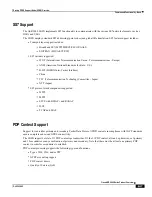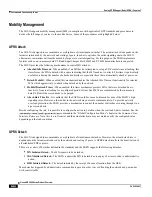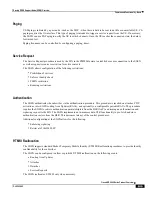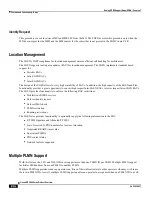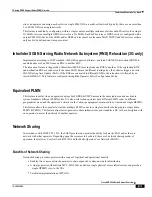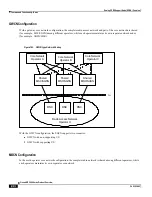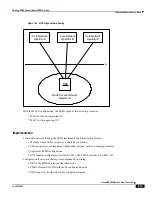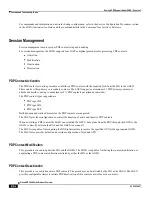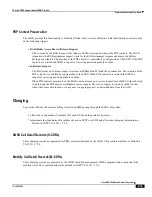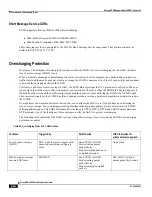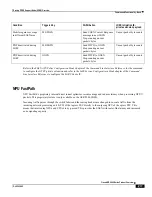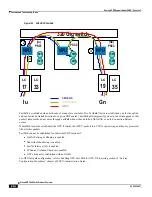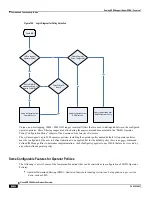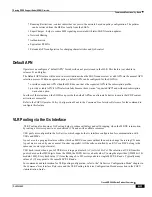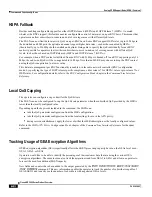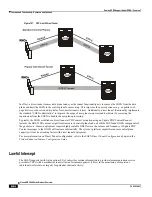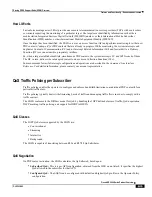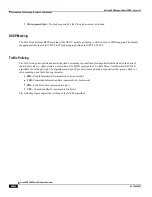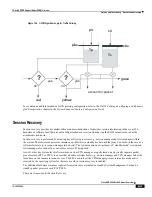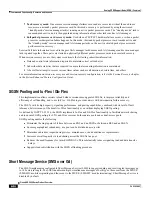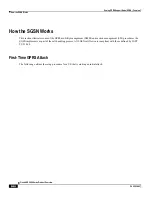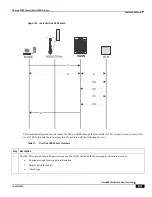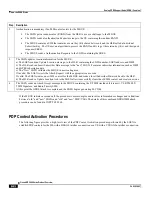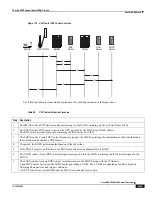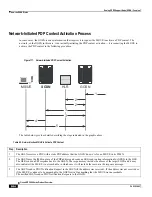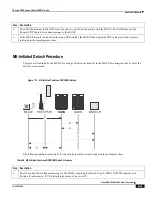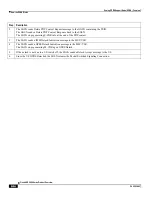
Serving GPRS Support Node (SGSN) Overview
Features and Functionality - Basic ▀
Cisco ASR 5000 Series Product Overview ▄
OL-22938-02
Roaming Restrictions - control subscriber‘s access to the network based on policy configuration. The policies
can be retrieved from the HLR or locally from the SGSN.
SuperCharger - helps to reduce MM signaling associated with inter-SGSN location updates.
Network Sharing
Authentication
Equivalent PLMNs
Extended APN configuration for charging characteristics and QoS control
Default APN
Operators can configure a ―default APN‖ for subscribers not provisioned in the HLR. This feature is available in
releases 8.1 and higher.
The Default APN feature will be used in error situations when the SGSN cannot select a valid APN via the normal APN
selection process. Within an operator policy, a default APN can be configured for the SGSN to:
override a requested APN when the HLR does not have the requested APN in the subscription profile.
provide a viable APN if APN selection fails because there was no "requested APN" and wildcard subscription
was not an option.
In either of these instances, the SGSN can provide the default APN as an alternate behavior to ensure that PDP context
activation is successful.
Refer to the
SGSN Operator Policy Configuration Mode
in the
Command Line Interface Reference
for the command to
configure this feature.
VLR Pooling via the Gs Interface
VLR Pooling, also known as Gs Pooling, helps to reduce call delays and call dropping, when the MS/UE is in motion,
by routing a service request to a core network (CN) node with availbale resources.
VLR pools are configured in the Gs Service, which supports the Gs interface configuration for communication with
VLRs and MSCs.
A
pool area
is a geographical area within which an MS/UE can roam without the need to change the serving CN node.
A pool area is served by one or more CN nodes in parallel. All the cells, controlled by an RNC or a BSC belong to the
same one (or more) pool area(s).
VLR hash is used when a pool of VLRs is serving a particular LAC (or list of LACs). The selection of VLR from this
pool is based on the IMSI digits. From the IMSI, the SGSN derives a hash value (V) using the algorithm: [(IMSI div 10)
modulo 1000]. Every hash value (V) from the range 0 to 999 corresponds to a single MSC/VLR node. Typically many
values of (V) may point to the same MSC/VLR node.
For commands and information for VLR pooling configuration, refer to the ―Gs Service Configuration Mode‖ chapter in
the
Command Line Interface Reference
and the VLR Pooling in Service Configuration Procedure section in the
SGSN
Administration Guide
.
Summary of Contents for ASR 5000 Series
Page 1: ......
Page 26: ......
Page 48: ...New In Release 10 0 SCM Features Cisco ASR 5000 Series Product Overview OL 22938 02 ...
Page 50: ......
Page 58: ......
Page 68: ......
Page 126: ......
Page 138: ......
Page 146: ......
Page 218: ......
Page 236: ......
Page 356: ......
Page 374: ......
Page 422: ......
Page 496: ......
Page 572: ......
Page 654: ......
Page 700: ......
Page 726: ......
Page 784: ......
Page 816: ......
Page 844: ......
Page 906: ......
Page 926: ......
Page 942: ......
Page 943: ...Cisco ASR 5000 Series Product Overview OL 22938 02 Chapter 30 Technical Specifications ...
Page 966: ......
Page 972: ......

